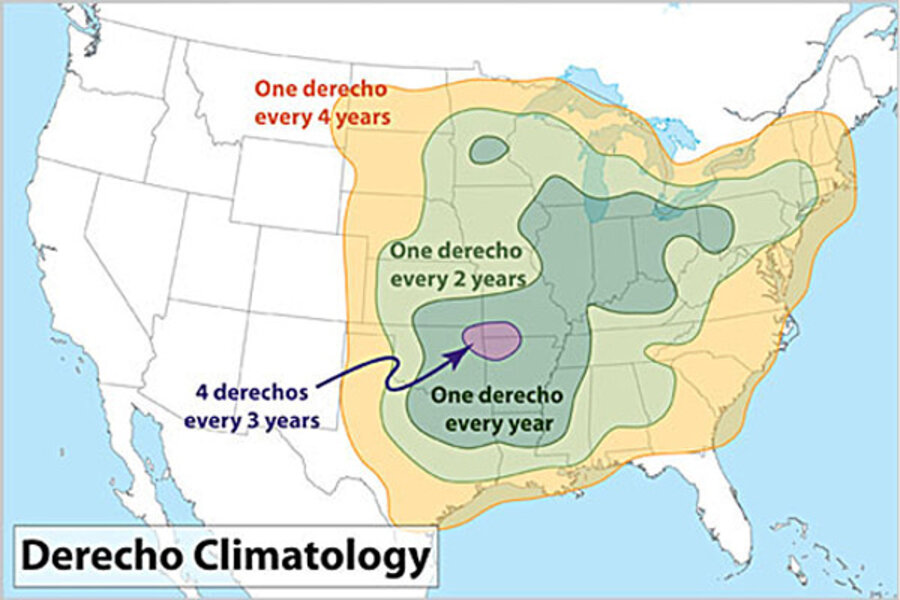Derecho windstorms could sweep the midwest: Who is in its path?
Loading...
| MILWAUKEE
The National Weather Service was tracking a so-called derecho weather pattern in the Midwest on Tuesday that could spawn severe windstorms in major metropolitan areas with gusts as strong as 100 mph.
Derecho windstorms occur once every year or two across the central and northeastern U.S. in a band from Texas to New England. They pack hazardous winds of at least 75 mph or more and maintain their intensity for hours as they sweep across vast distances.
In some cases a derecho will spawn tornados and accompany storms that produce hail the size of golf balls.
The current pattern could affect larger metropolitan areas in Milwaukee, Chicago, Detroit, Cleveland and Pittsburgh in the next two days, said Bill Bunting, a meteorologist in the agency's storm prediction center in Norman, Okla.
"We tend to be careful using the D word, but yes, a derecho is possible," Bunting said.
The weather service was predicting a chance of storm activity beginning in southern Montana and northeastern Wyoming on Tuesday afternoon. It was expected to sweep eastward, with a 45 percent chance that severe wind activity would hit the southern half of South Dakota down to the northern ridge of Nebraska. There's a 30 percent likelihood the severe winds stretch into northern Iowa and southern Minnesota.
"Thirty percent is pretty high in the world of predicting severe weather," said Paul Collar, a National Weather Service meteorologist in Sullivan, Wis. "All severe forms of weather will be on the table but with this pattern, strong damaging winds look to be the main concern."
The storms could generate straight-line wind gusts of 70 mph or more. That's enough to rip shingles off a roof, knock down trees and even tip over semi-trailers. They could also cause flights to be delayed or canceled, said Collar, who added that commercial airlines have on-board navigation that allows pilots to navigate around the worst weather.
The weather agency also is forecasting further storm activity Wednesday. Meteorologists predict a 45 percent chance that thunderstorms, powerful wind gusts and possible tornados develop in an oval stretching from eastern Illinois across most of Indiana to the western half of Ohio.
Outside that area, the likelihood of severe weather is 30 percent from Milwaukee to Pittsburgh, with a 15 percent chance of reaching the Washington, D.C., area.
"It's scary because of the potential, but we don't want to over-forecast," Bunting said. He said residents in affected states should remain aware that severe weather is possible, and pay close attention for any weather warnings.
Campers or hikers in forested areas should be cautious about the potential of falling trees and boaters shouldn't venture too far from shore, the weather service said.







